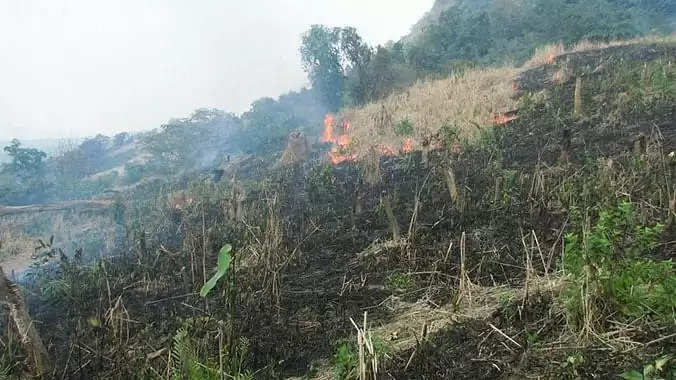EDITORIAL | Protect the environment; do away with slash-and-burn agriculture

FROM THE EDITOR’S DESK:
First of all, what do we understand by slash-and-burn cultivation?
Slash-and-burn agriculture is a farming method involving the cutting and burning of plants in a forest or woodland to create a field.
The method starts with the cutting down of trees and woody plants in an area.
The downed vegetation is left to dry and is burned and results in a nutrient-rich layer of ash covering the soil.
However, the plot’s productivity decreases with time as this farming method eventually depletes the soil of all its fertility.
The time it takes for the soil to recover is between five to over twenty years, depending on several conditions.
We know this method of cultivation as Jhum or Jhoom cultivation in India and Bangladesh.
Here in the northeast, officials in Mizoram reported that around 1,300 forest fires occurred last year and that 1,090 were because of slash-and-burn cultivation and only 210 were due to natural causes.

According to the India State of Forest Report (ISFR)-2019 released by the Forest Survey of India (FSI), Mizoram has a forest cover of 85.41 per cent, down from 86.26 per cent in 2017.
We may note that bushfires have killed approximately 800 people in Australia since 1851 and billions of animals.
In the book, Human and Economic Geography by Goh Cheng Leong and Gillian Morgan, some principal ways to overcome forestry problems are afforestation, improved cutting practices, forest protection and reduction of waste.
The reality of it all is that population growth has increased the demand for land. Therefore, there is also an increase in the demand for land needed for cultivation and living.
In 1906, the British formed the Imperial Forest Research Institute in Dehradun, which brought the system of scientific forestry.
They termed shifting cultivation as hazardous as they considered it a fire hazard, which made it difficult to calculate taxes.
In the past few years alone, we witnessed several conflicts between the authorities and indigenous communities over forest management.
It is estimated that around 200 to 500 million people worldwide practise slash-and-burn agriculture.
Therefore, it is here where education plays a fundamental role in environment preservation.
Besides this, many projects and field surveys are being conducted to understand the potential threat of humans on fragile ecosystems.
Union Minister Jitendra Singh last year mentioned that bamboo would be an important component of India’s post-COVID-19 economy and would play a key role in Prime Minister Narendra Modi’s ‘vocal for local’ campaign.
ALSO READ:
Also Read: Petrol, diesel prices at fresh highs as rates up for second straight day

















